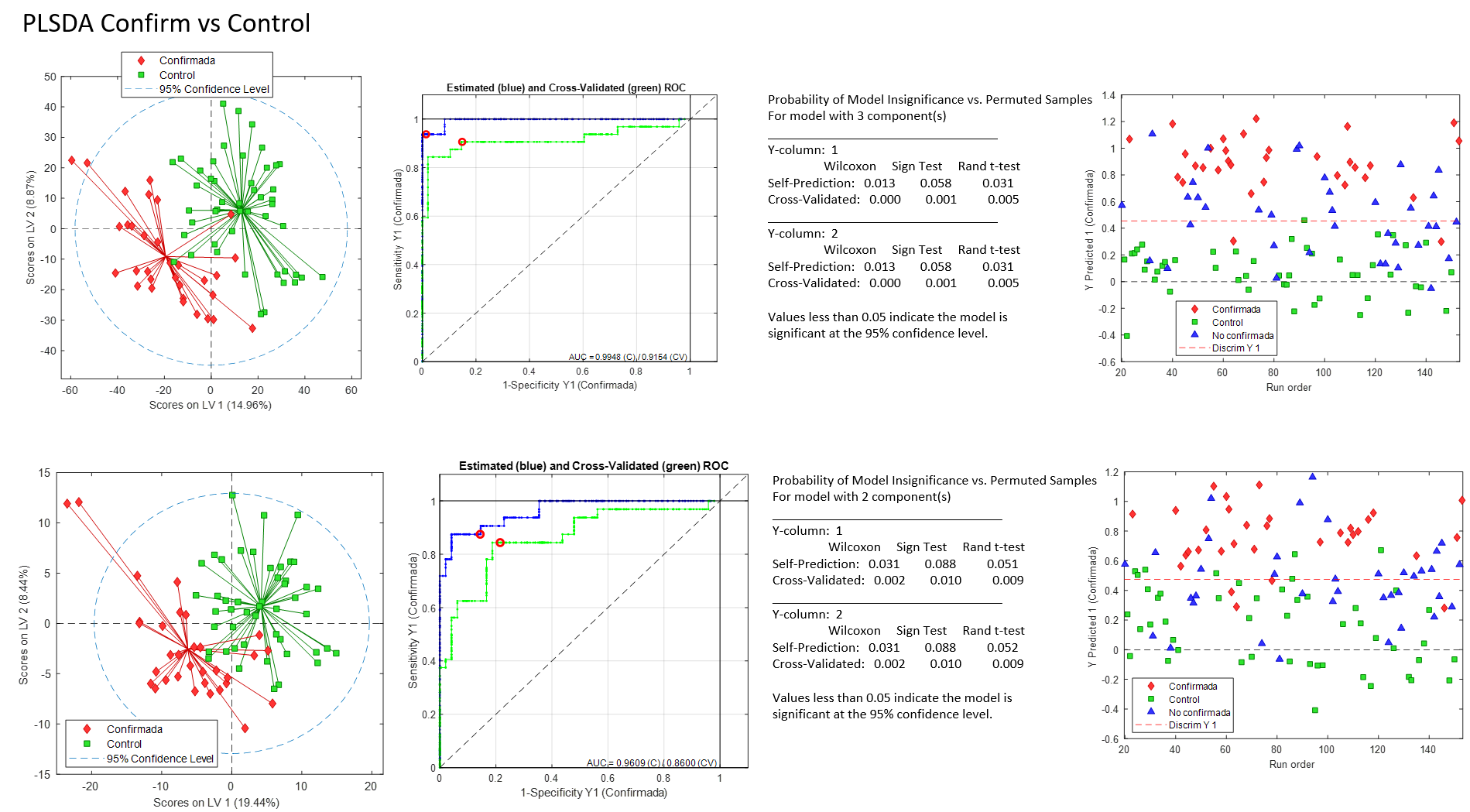Neonatology
Session: Neonatal Infectious Diseases/Immunology 1
592 - Metabolomic profiles in the diagnosis of sepsis in very low birth weight newborns
Friday, May 3, 2024
5:15 PM - 7:15 PM ET
Poster Number: 592
Publication Number: 592.569
Publication Number: 592.569
.jpg)
María Cernada-Badía, MD, PhD (she/her/hers)
Neonatologist
University and Polytechnic Hospital La Fe
Valencia, Comunidad Valenciana, Spain
Presenting Author(s)
Background: The lack of early and reliable markers of neonatal sepsis implies the use of unnecessary antibiotics that alter the microbiota, generate resistance, and increase costs. Metabolomic profiles may be capable of discriminating very low birth weight newborns (VLBWN) with sepsis from controls and distinguishing sepsis caused by Gram-positive and Gram-negative germs.
Objective: The main objective was to characterize the metabolomic profiles in serum of VLBWN with sepsis in comparison to those with similar clinical and demographic characteristics but without sepsis. The secondary objective was to characterize the metabolomic profiles in serum in VLBWN with sepsis due to Gram-positive germs in comparison to those with similar clinical and demographic characteristics but with sepsis due to Gram-negative germs.
Design/Methods: For this, a double cohort, single-centre, prospective, and observational study was designed. During a period of 36 months, VLBWN admitted to a tertiary referral hospital were included. Both groups were similar, including days of mechanical ventilation and days of admission, as well as comorbidities associated with prematurity. However, the confirmed sepsis group presented greater use of inotropic treatment. Plasma metabolomic profiles in 123 samples were studied. Untargeted metabolomic fingerprints of serum samples were acquired using ultra-performance liquid chromatography (UPLC)-quadrupole time-of-flight Mass Spectrometry (UPLC-qTOFMS).
Results: Significant differences were obtained between neonatal sepsis compared to a control group (img1). The metabolites that most discriminated were mainly lysophosphatidylcholine and lysophosphatidylethanolamine. Performing a functional analysis we found that five metabolic pathways (riboflavin, steroid hormones, tryptophan, caffeine, and nicotinate and nicotinamide metabolism) were consistently impaired (FDR < 0.01) in neonates with neonatal sepsis. The tryptophan metabolism pathway was the one that best differentiated between sepsis and control group. However, no significant differences were found between newborns with sepsis caused by gram-positive germs compared to those caused by gram-negative germs (img2).
Conclusion(s): The analysis of metabolomic profiles in serum seems to be useful as a diagnostic tool for sepsis in VLBWN. The identification of new markers of sepsis could allow an early and differentiating diagnosis.


